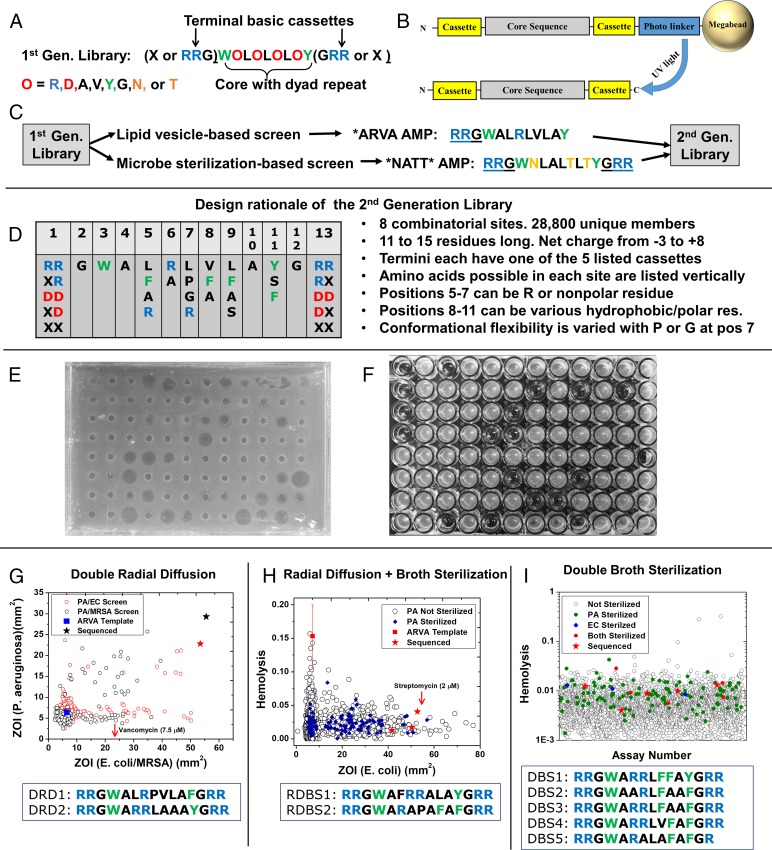Fig. 1.
Design and screening of the second-generation AMP library. (A) The first-generation, de novo designed library that was previously screened for membrane permeabilization (37) and bacterial sterilization (35). RRG−/−GRR cassettes were present or absent as tripeptides. (B) One-bead, one-sequence library architecture. Library members are attached to nominal 0.3-mm diameter polystyrene/PEG Tentagel Megabeads by a photocleavable linker. Each bead releases about 0.5 nmol of a single peptide sequence. (C) Schematic of prior work leading to the second-generation library, see text. (D) Second-generation library design. The 2 to 5 residues listed vertically under each position, and the native residue, are all equally probable. Acidic or basic terminal groups are cassettes of 0, 1, or 2 residues. A list of design principles are shown to the Right. See text. (E) Example radial diffusion assay plate for E. coli. Small holes in the bacteria-seeded agar layer were filled with 10 μL of an 8-μM solution of a single-library member extracted from a single bead. Bacteria grow at the interface after addition of nutrient agar, except where inhibited. Radii of zones of inhibition were measured after overnight incubation. (F) Example plate from broth sterilization screening assay P. aeruginosa. Library members at 8 μM plus 1 × 109 human RBC/mL were added to 105 P. aeruginosa/mL in growth media. After overnight incubation, a second assay plate containing media was inoculated and grown overnight. Clear wells in the second plate indicate that the bacteria were sterilized in the presence of concentrated RBCs. (G) Results of small-scale screen by DRD of 7.5 μM of peptide in the presence of 1 × 109 human RBC/mL against P. aeruginosa and either E. coli or MRSA. The sequences of two exceptional peptides, marked by stars, are shown. The activity of 7.5 μM vancomycin against S. aureus is shown for comparison. (H) Results of small-scale hybrid screen using radial diffusion with ∼7.5 μM of each peptide in the presence of 1 × 109 human RBC/mL against E. coli, and broth sterilization with RBCs against P. aeruginosa. Hemolysis was also measured. Sequences of two exceptional peptides, with activity against both microbes and low hemolysis, marked by red stars, are shown. The activity of 2 μM streptomycin against E. coli is shown for comparison. (I) Results from ∼3,800 library members that were screened by a DBS assay in which sterilization of E. coli and P. aeruginosa in the presence of 1 × 109 human RBC/mL were assessed in addition to hemolysis. The sequences of five exceptional peptides with low hemolysis are shown.

